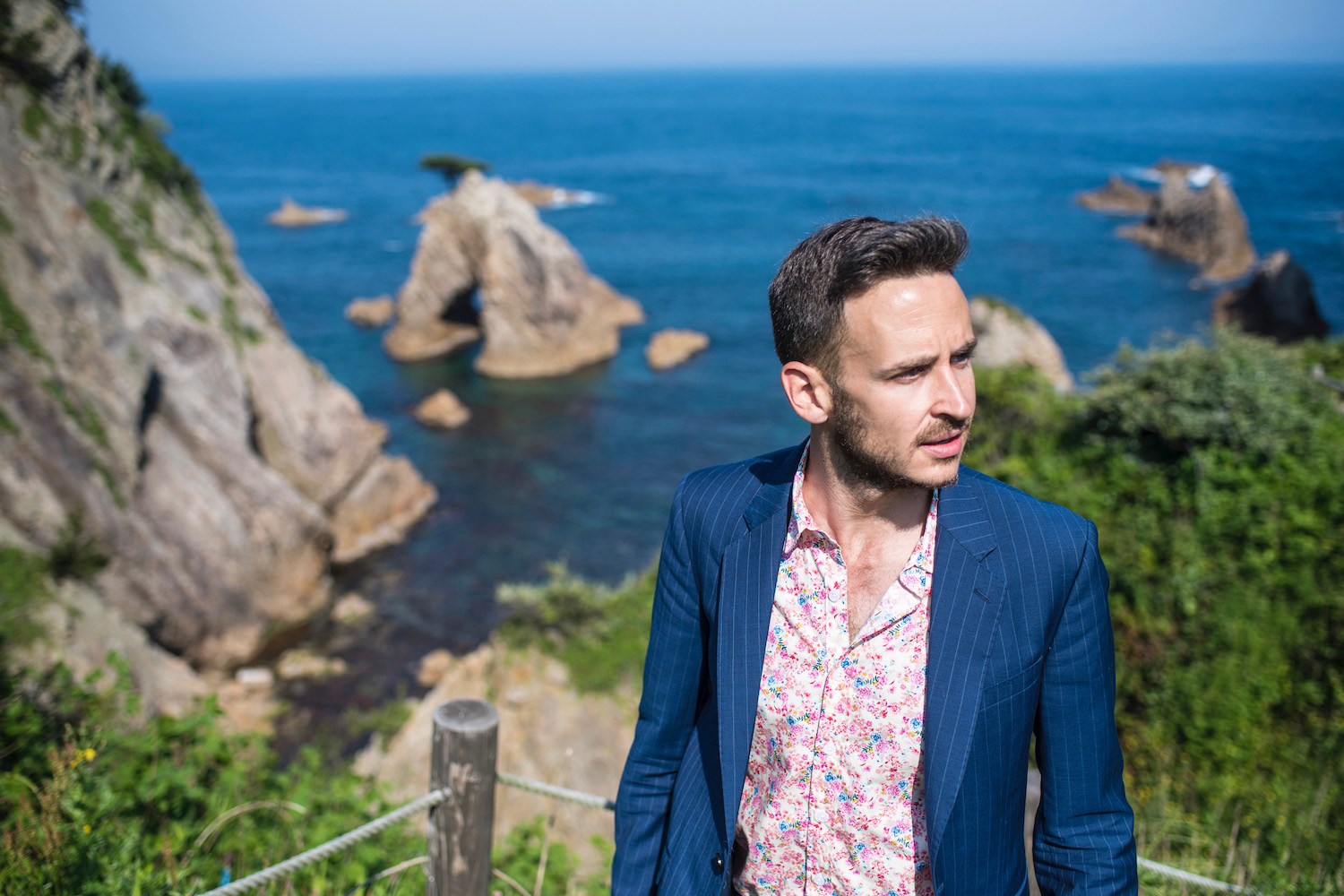Memories of my first trip to the Tottori Sand Dunes blew through my mind as I disembarked Conan (the anime character, not the barbarian) Airport Sunday evening. But hunger quickly ate away at my nostalgia.
As I made my way toward the nearest conveyor-belt sushi restaurant, I remembered something an acquaintance had told me about Tottori. “There are more ghosts here than people,” he’d said, in the process making some reference to the aforementioned anime character, whose importance did and does allude me.
Noticing a waiting time of 120 minutes, I turned away from the kaiten-zushi immediately, but a woman I hadn’t noticed behind the counter literally ran outside into the parking lot to tell me she could accommodate me at the counter. I planned to tell her how kind she was before I left—I even looked up how to say it in Japanese—but she was nowhere to be found.
Contradictory Scenery
Tottori is loosely tied—themed is the better way to characterize it—with the White Rabbit of Inaba, a secondary player in Japan’s creation myth. Many of the depictions of this rabbit inside the city limits are downright terrifying, however—one I leapt over during my run Monday morning called to mind the “It Chapter Two” trailer I’d watched before on my flight from Tokyo Sunday, against my better judgment.
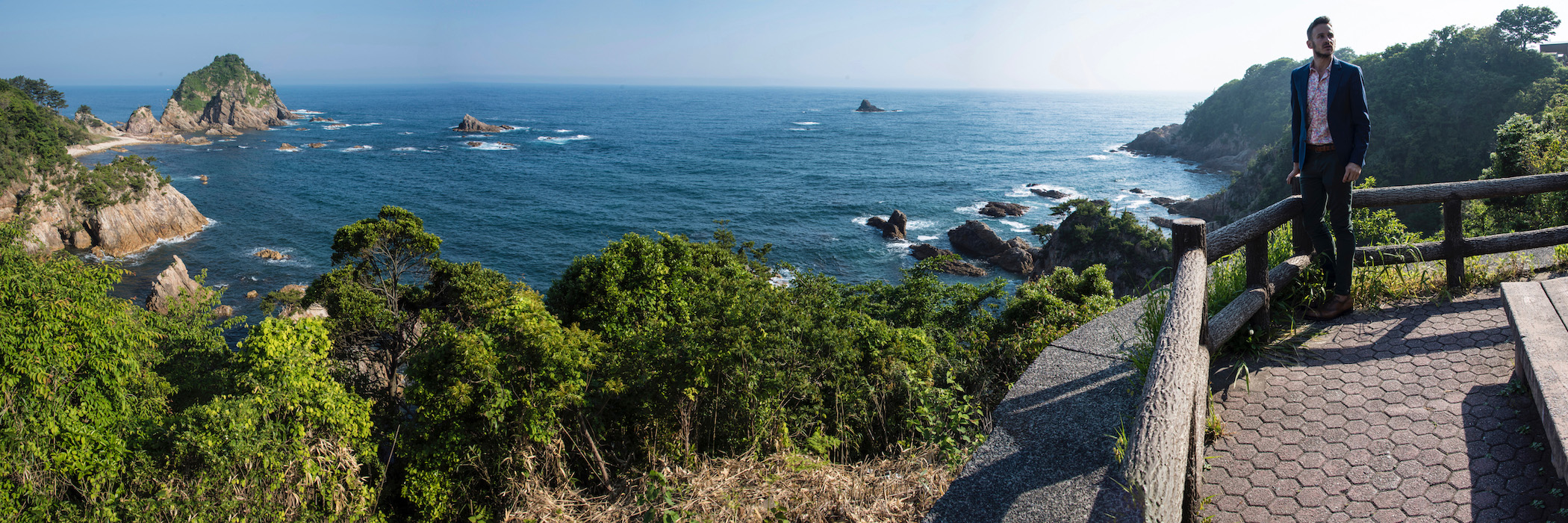
You can’t honestly think she was a ghost, I scolded myself as I neared the ruins of Tottori Castle, which had in the dark of the night before creeped me the eff out, albeit largely because I feared a bar was roaming the grounds. I affirmed my atheism as I touched the newly-restored bridge over the erstwhile fortress’ moat, and tried to look forward instead of back as I returned to my hotel.
Prior to re-visiting the so-called “Desert of Japan,” which is significantly better known among foreigners now than it was when I first came (and I’d like to believe I had a part in that), I’d be making my way along the Uradome Coast. Famous for somewhat contradictory scenery—pine-crested rock-arch islands over turquoise water that evokes the tropics—the rocky shoreline seemed a fitting prologue to my two weeks in Japan’s San’in region, especially because it was wholly deserted apart from local people (and me).
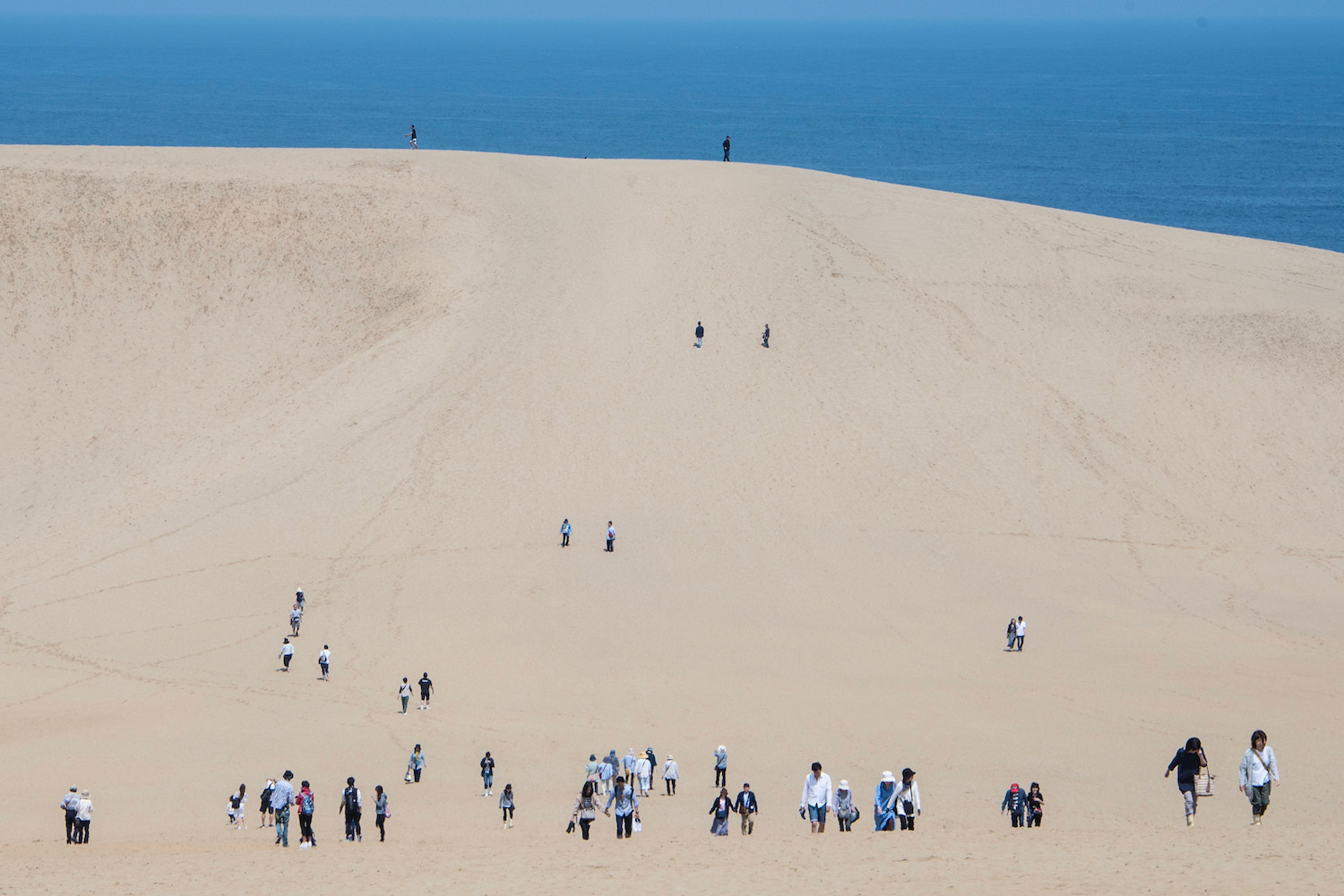
As I waited in the town of Ajiro for a bus that would get me to the dunes right before the light became unsuitable for landscape photography, I called my grandmother to wish her a happy Mother’s Day, having talked to my own mother before bed the previous night. I salivated as she described the feast my father had cooked for her, and told her how excited I was to see her in a few weeks’ time. But I was content being precisely where I was in that moment, which is a rare feeling when your feet are always itchy.
Ghosts Again
Time has a tendency to stand still in all but a few parts of Japan, especially when it comes to nature.
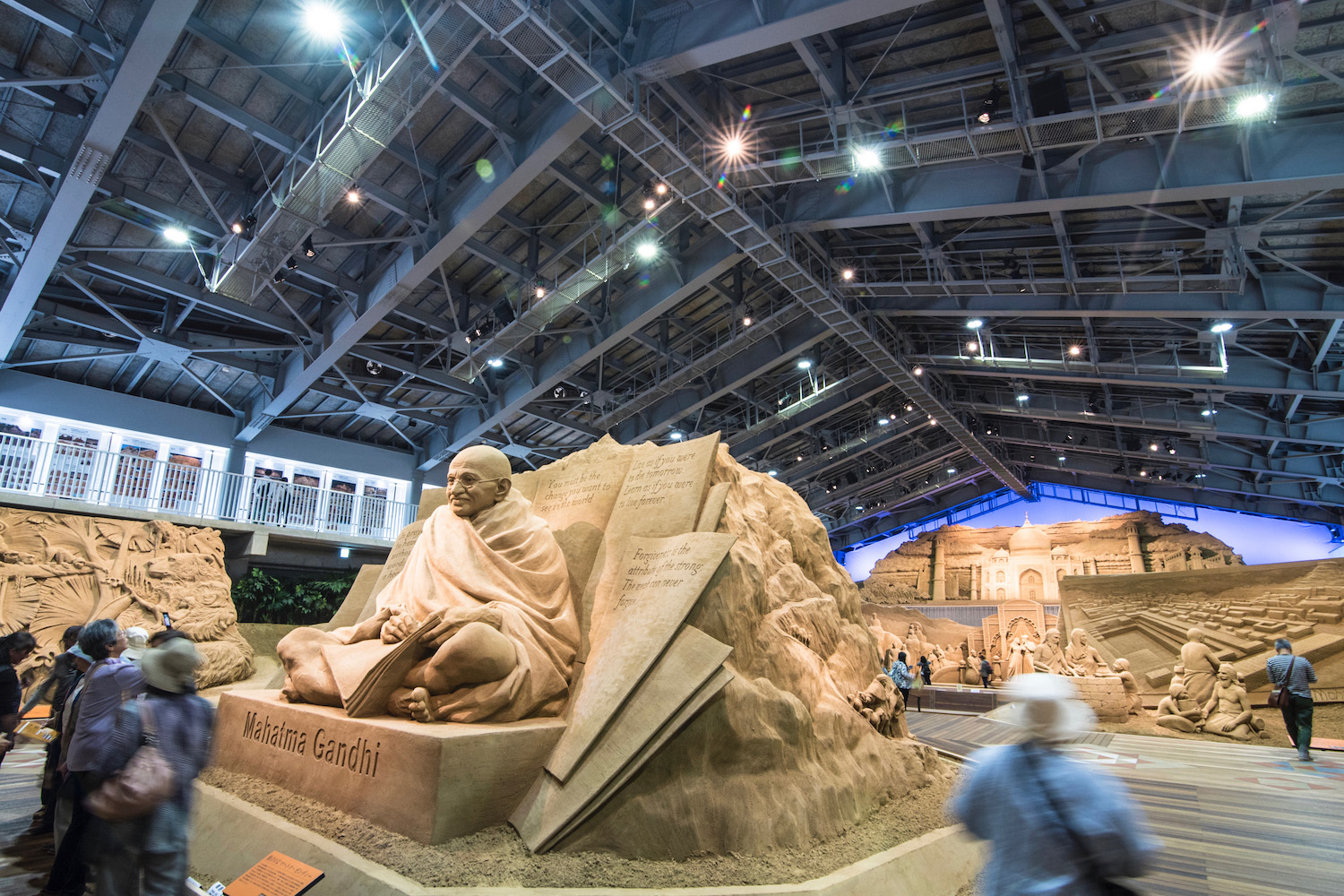
It helped, of course, that I made my way into the Tottori Sand Dunes at basically the same time of day I’d come in ’14—the light was practically identical, even if the dunes had grown or shrunk an inch or two or ten over the past half-decade. The concessionaire selling camel rides was just as pissed off that I photographed his star attraction as he’d been back then, but on this occasion I paid him neither mind nor money, what with the fact that I had a killer zoom.
Nothing had changed at the dunes except for my camera; I left as soon as I got the shots I wished I’d taken five years back, then made my way to the Sand Museum, which I didn’t know existed at that time. The sculptures depicting the architecture of South Asia were impressive in their scale and attention to detail, but the cone of fresh milk soft cream I bought on the way in, sprinkled delicately with extra-fine coffee powder, satisfied me more than the Gandhi quotes carved above his effigy.
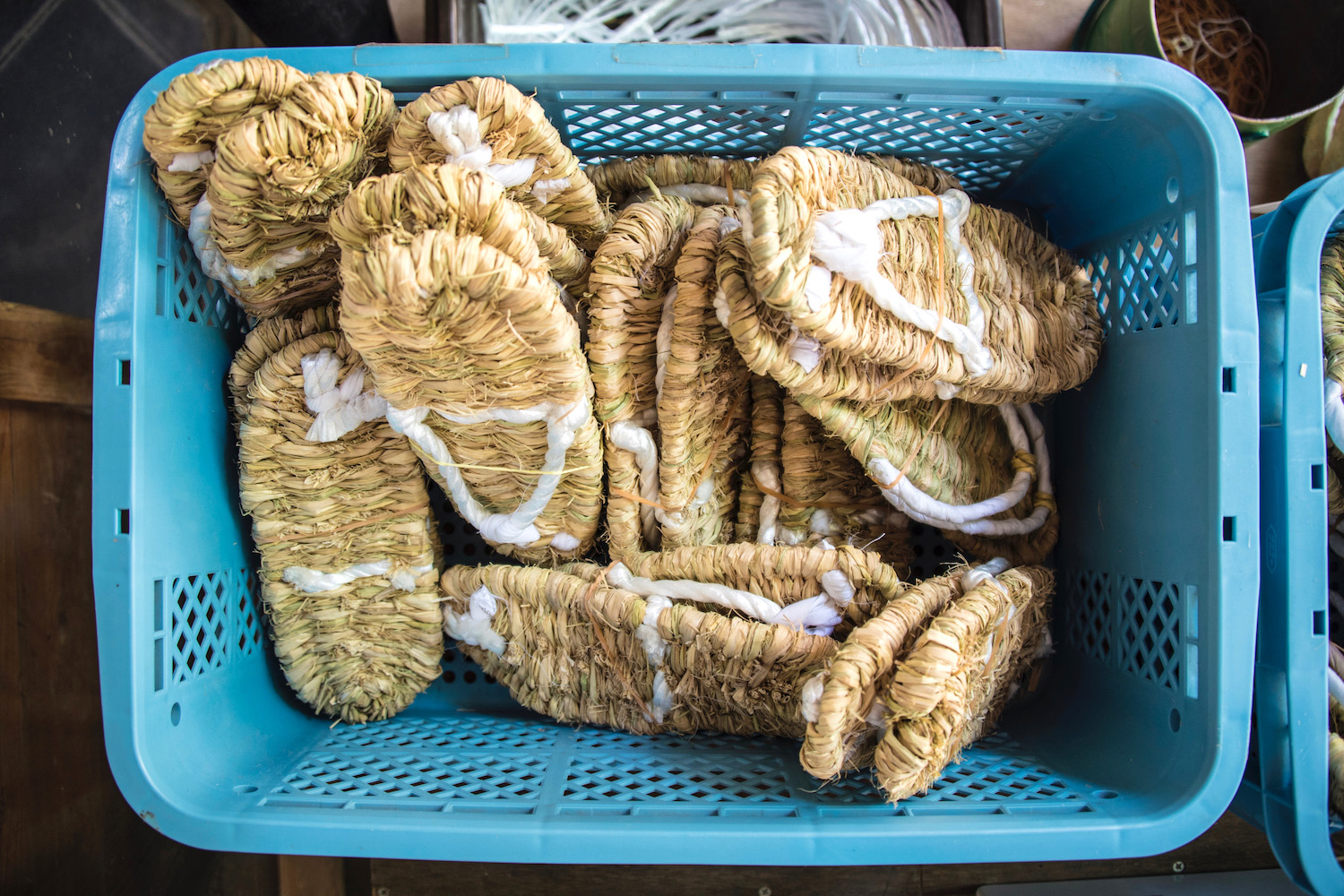
I realized on my way back to the city center that I had misgauged the amount of time it would take me to reach Mitokosan Sanbutsu Temple outside Kurayoshi, keeping in mind that all climbers must enter by 3 PM. Undeterred I grabbed a quick curry lunch, and spent my train ride watching the series finale of “Veep,” which made me think of ghosts again.
Made It Up the Mountain
Until about five minutes before three, I assumed the Tottori Sand Dunes were the most remarkable site I’d be seeing Monday. One fact I’d missed during my research was that only pairs or groups of people could scale the path to Sanbutsu-ji, which I’d subsequently learned was treacherous and chain-supported.
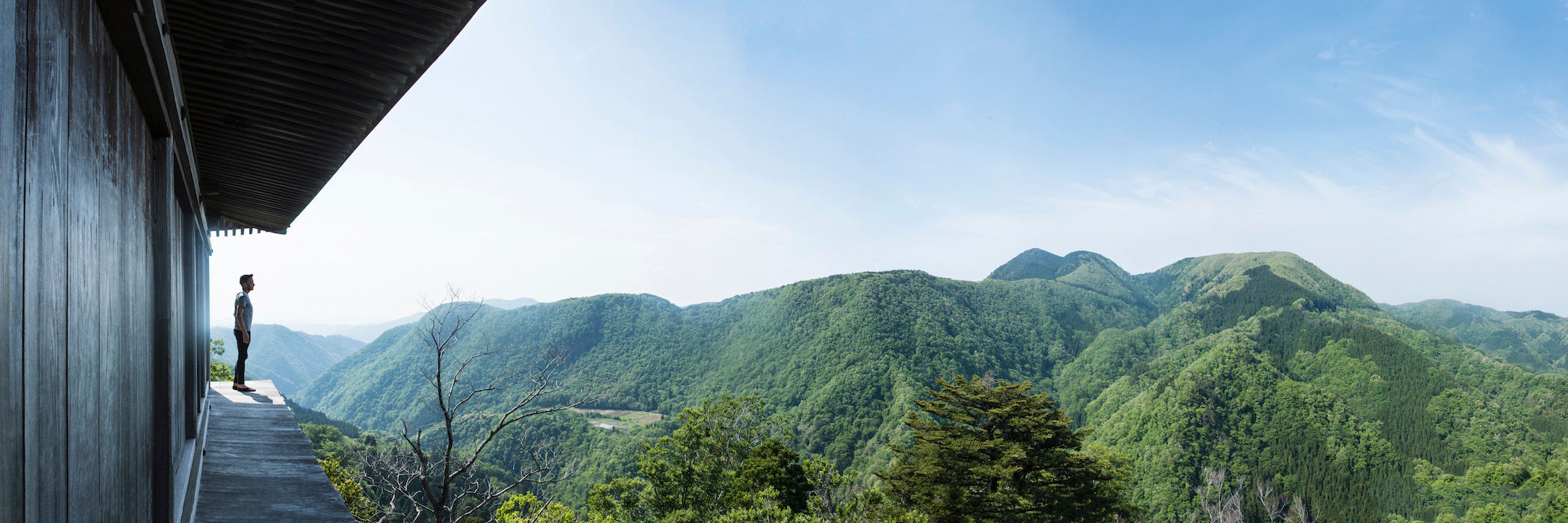
I’d all but given up hope when the woman in the ticket booth, who appeared to be about as old as I was, emerged from behind her desk. “Do you still want to hike?”
I nooded, shouted “hai” and stood up all in one breath, which is also as long as it took me to agree to the shortened 75-minute round-trip (it’s usually 90 or even 120) she proposed. She told me her name was Miho, though we didn’t converse much during the way up to the series of wooden temples, apart from Miho explaining to me that historians still can’t account for how a massive bronze bell made it up the mountain 13 centuries ago.
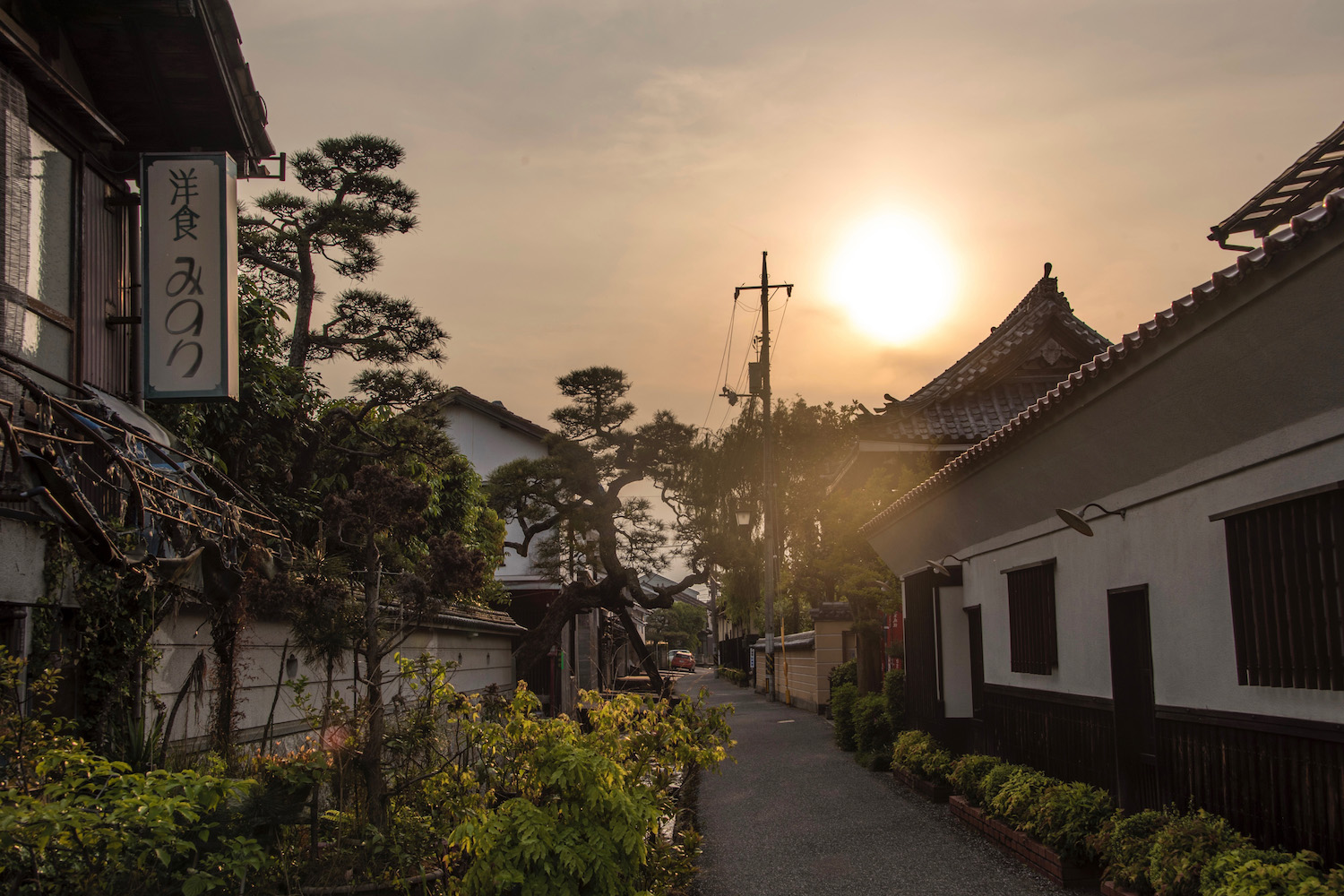
I rewarded Miho’s kindness by ascending twice as fast as I needed to; she showed her thanks to me by suggesting I stay at the top as long as I wanted, and emphasizing that she wasn’t simply saying this out of kindness. She handed me a small piece of paper—a handwritten prayer, allegedly to the patron god of the temple—as I made my way off the temple grounds to catch my bus back to Kurayoshi.
A Third Chance
In the mixture of gratitude and hurriedness I felt as I descended from Daibutsu-ji, I’d failed once again to tell a kind Japanese woman how kind she was (in Japanese), even if I was reasonably certain this one was flesh-and-blood.
Thankfully, I’d have a third chance en-route to Kurayoshi’s so-called White-Walled Warehouses, which could have been culled from Kyoto or Kanazawa, were they not utterly devoid of other humans. The older woman, who wore a flowered blouse but didn’t take off her sunglasses when she boarded the bus, never told me her name or spoke in English; she communicated as if I could understand Japanese.
Her presence, at once, evoked the essence of my grandmother and of a much younger woman, younger even than Miho, apart from the delicious Okinawan candy she gave me, a delicious but grandmotherly gesture if there even was one.
I wanted to explain to her what an incredible and otherworldly day I’d had, how the San’in region had already proved itself to be so much more than the Tottori Sand Dunes (maybe, based on first impressions anyway, my favorite or at least the most special part of Japan), but instead I kept it simple. “Anata wa shinsetsu desu,” I said with a smile, and without hesitation.
Other FAQ About Visiting the Tottori Sand Dunes
Why does Tottori have sand dunes?
Tottori has sand dunes because of the fact that sediment from a nearby river has slowly built up over the course of thousands of years. The dunes are naturally occurring and have not been built by tourism authorities, contrary to certain internet rumors.
What is Tottori, Japan known for?
Tottori is known primarily for its sand dunes and also, for being the gateway to the San’in region from points further east in Japan. You can get here by limited express train from Kyoto and Osaka, which is an attractive prospect for travelers with time on their hands and a sense of adventure.
Are the Tottori Sand Dunes a desert?
Although the Tottori Sand Dunes resemble a desert, they are not a desert in a traditional sense. Rather than manifesting as a result of the desertification process, they exist because of sediment being moved by the wind. Japan isn’t technically home to any real deserts.



